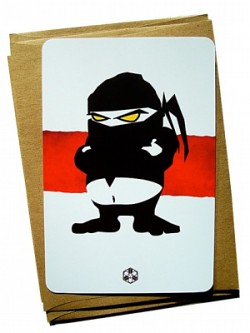 While researching for my Craft Con presentation on the environmental impact of crafting last month, it felt like I had fallen down a rabbit hole. Merely scratching the surface of commercial supplies, revealed widespread outsourcing and men in suits at the top (whom I would wage haven’t the slightest interest in anything we make) becoming enormously wealthy.
While researching for my Craft Con presentation on the environmental impact of crafting last month, it felt like I had fallen down a rabbit hole. Merely scratching the surface of commercial supplies, revealed widespread outsourcing and men in suits at the top (whom I would wage haven’t the slightest interest in anything we make) becoming enormously wealthy.
I took an anonymous survey of crafters from across the country, and found that 92% of us use commercial supplies to some extent. My two part article for The Storque (to be cross-published here) will reveal further statistics.
There will also be an extensive list of resources that I have found to be informative about the business practices of retailers, product safety concerns, and environmental catastrophes both in the U.S. and the Far East, where many of our raw materials are combined with highly toxic chemicals.
I see crafters putting so much dedication towards being green, but numbers don’t lie. In 2001 craft supplies were a $10 billion a year industry. This number has tripled to $30 billion since. Part of our job on CAGW is to showcase green supplies, and they certainly exist, but not to the extent you might imagine. Readers ask us where to find eco-friendly alternatives for specific items, and often our searches come up empty. I promised to be an “eco-friendly craft ninja” when I began writing here. I also promise that you can find that completely adorable fat ninja postcard set, and tons of other cool art over at interrupt’s Etsy shop.
So, we are drafting a petition to ask that retailers provide transparency in manufacturing, invest in the development of innovative tools, and eco-friendly non-toxic products. And one more thing, we can spot greenwashing a mile away…don’t even go there. Are you afraid we haven’t enough chips on the table? Don’t call a bluff until you’ve read Part 2 of my upcoming article.
We need YOUR suggestions to begin this process. Every maker possesses unique insight from their hobbies, and there are as many kinds of crafts as there are colors of the rainbow. Personally, I’m tired of being handed beige. Here is what we’re looking for:
Are there items that you commonly use for projects, but have a hard time finding? Where are you seeing excessive packaging? What items have such scary warning labels that you are asking yourself, “Is this project worth giving myself brain damage over?”
What would be stocked in the craft store of your dreams?
Please leave suggestions in comments or e-mail them to craftingagreenworld@greenoptions.com
To be continued…


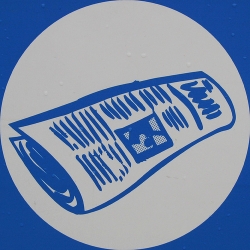
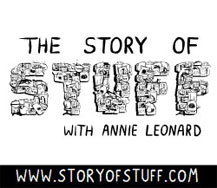
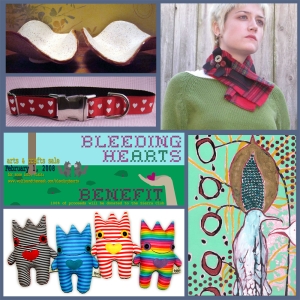
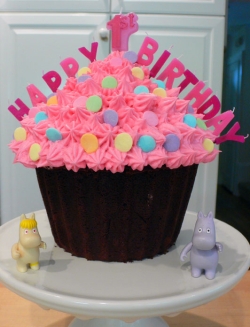
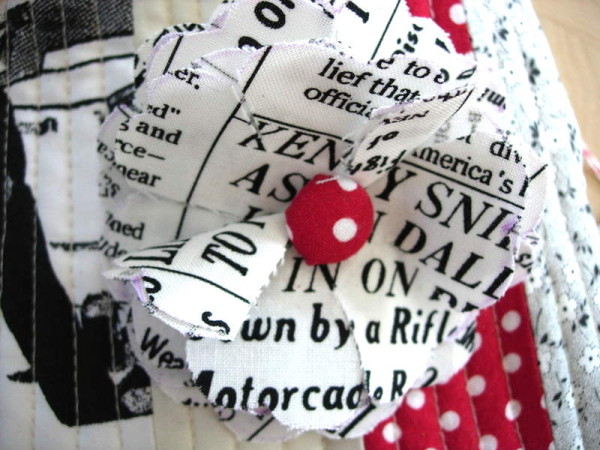
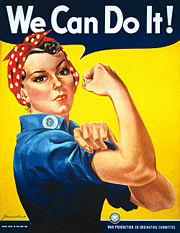
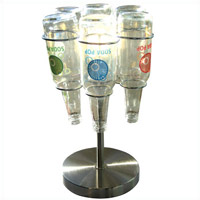
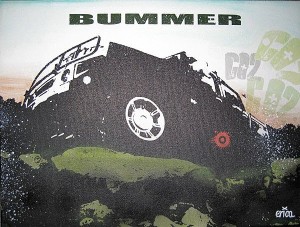
One thing I’m specifically frustrated by is sterling findings, especially chain. I try and get around it by using thrifted materials, or buying what some etsy sellers are calling “old stock” brass, but I still wind up buying some findings I don’t feel so great about.
I’m trying to find sources on my own, but anthing you have to write on this matter would be insanely appreciated.
One thing I’m specifically frustrated by is sterling findings, especially chain. I try and get around it by using thrifted materials, or buying what some etsy sellers are calling “old stock” brass, but I still wind up buying some findings I don’t feel so great about.
I’m trying to find sources on my own, but anthing you have to write on this matter would be insanely appreciated.
One thing I’m specifically frustrated by is sterling findings, especially chain. I try and get around it by using thrifted materials, or buying what some etsy sellers are calling “old stock” brass, but I still wind up buying some findings I don’t feel so great about.
I’m trying to find sources on my own, but anthing you have to write on this matter would be insanely appreciated.
One thing I’m specifically frustrated by is sterling findings, especially chain. I try and get around it by using thrifted materials, or buying what some etsy sellers are calling “old stock” brass, but I still wind up buying some findings I don’t feel so great about.
I’m trying to find sources on my own, but anthing you have to write on this matter would be insanely appreciated.
I do most of my craft shopping at chain stores like Michael’s and Joann’s and I don’t think they have any yarn that is 100% wool and I know they don’t have any alpaca or organic or hemp.
I do most of my craft shopping at chain stores like Michael’s and Joann’s and I don’t think they have any yarn that is 100% wool and I know they don’t have any alpaca or organic or hemp.
I do most of my craft shopping at chain stores like Michael’s and Joann’s and I don’t think they have any yarn that is 100% wool and I know they don’t have any alpaca or organic or hemp.
Two items: Spray basting and fusibles. The first scares me, the second makes me suspicious.
Bravo! Great suggestions so far!
I’ve been wondering, with all the great new technology out there, if there isn’t a safer way to make polymer clay.
Bravo! Great suggestions so far!
I’ve been wondering, with all the great new technology out there, if there isn’t a safer way to make polymer clay.
Bravo! Great suggestions so far!
I’ve been wondering, with all the great new technology out there, if there isn’t a safer way to make polymer clay.
Bravo! Great suggestions so far!
I’ve been wondering, with all the great new technology out there, if there isn’t a safer way to make polymer clay.
I bought a pair of scissors a few months ago that came in a blister pack. The irony of needing scissors to open scissors was a bit much.
I bought a pair of scissors a few months ago that came in a blister pack. The irony of needing scissors to open scissors was a bit much.
I bought a pair of scissors a few months ago that came in a blister pack. The irony of needing scissors to open scissors was a bit much.
I bought a pair of scissors a few months ago that came in a blister pack. The irony of needing scissors to open scissors was a bit much.
Stocking local yarn would be a great…local anything.
Colorful, attractive organic cotton fabrics – they do exist!
Stocking local yarn would be a great…local anything.
Colorful, attractive organic cotton fabrics – they do exist!
Stocking local yarn would be a great…local anything.
Colorful, attractive organic cotton fabrics – they do exist!
Stocking local yarn would be a great…local anything.
Colorful, attractive organic cotton fabrics – they do exist!
Thank you so much for writing about this now. I came across CAGW a few weeks ago and it’s now my second homepage (the first being Etsy!).
I am slowly phasing out all of my animal-tested products and other travesties of marketing, but I’ve been at a loss trying to think of ways to make my beading more earth friendly. I stopped buying at large stores, but if I turn to independent sellers online (due to lack of small shops near me), I want to be sure they’re conscientious, too.
I would like a little more information on polymer clay. I use it a ton to create, but I also feel guilty with each little piece because I’m adding to clutter.
My ideal craft shop would have EVERYTHING! I love it all. I would especially love a great supply of pretty recycled papers and unique recycled beads. Non-toxic glues/adhesives, glass etching solution, paints. Unique synthetic yarns AND more stylish (affordable) knitting needles/crochet hooks.
Thank you again for writing an article that re-sparked my motivation. Be sure to post info about the Storque article. I can’t wait to read it!
Thank you so much for writing about this now. I came across CAGW a few weeks ago and it’s now my second homepage (the first being Etsy!).
I am slowly phasing out all of my animal-tested products and other travesties of marketing, but I’ve been at a loss trying to think of ways to make my beading more earth friendly. I stopped buying at large stores, but if I turn to independent sellers online (due to lack of small shops near me), I want to be sure they’re conscientious, too.
I would like a little more information on polymer clay. I use it a ton to create, but I also feel guilty with each little piece because I’m adding to clutter.
My ideal craft shop would have EVERYTHING! I love it all. I would especially love a great supply of pretty recycled papers and unique recycled beads. Non-toxic glues/adhesives, glass etching solution, paints. Unique synthetic yarns AND more stylish (affordable) knitting needles/crochet hooks.
Thank you again for writing an article that re-sparked my motivation. Be sure to post info about the Storque article. I can’t wait to read it!
Thank you so much for writing about this now. I came across CAGW a few weeks ago and it’s now my second homepage (the first being Etsy!).
I am slowly phasing out all of my animal-tested products and other travesties of marketing, but I’ve been at a loss trying to think of ways to make my beading more earth friendly. I stopped buying at large stores, but if I turn to independent sellers online (due to lack of small shops near me), I want to be sure they’re conscientious, too.
I would like a little more information on polymer clay. I use it a ton to create, but I also feel guilty with each little piece because I’m adding to clutter.
My ideal craft shop would have EVERYTHING! I love it all. I would especially love a great supply of pretty recycled papers and unique recycled beads. Non-toxic glues/adhesives, glass etching solution, paints. Unique synthetic yarns AND more stylish (affordable) knitting needles/crochet hooks.
Thank you again for writing an article that re-sparked my motivation. Be sure to post info about the Storque article. I can’t wait to read it!
Thank you so much for writing about this now. I came across CAGW a few weeks ago and it’s now my second homepage (the first being Etsy!).
I am slowly phasing out all of my animal-tested products and other travesties of marketing, but I’ve been at a loss trying to think of ways to make my beading more earth friendly. I stopped buying at large stores, but if I turn to independent sellers online (due to lack of small shops near me), I want to be sure they’re conscientious, too.
I would like a little more information on polymer clay. I use it a ton to create, but I also feel guilty with each little piece because I’m adding to clutter.
My ideal craft shop would have EVERYTHING! I love it all. I would especially love a great supply of pretty recycled papers and unique recycled beads. Non-toxic glues/adhesives, glass etching solution, paints. Unique synthetic yarns AND more stylish (affordable) knitting needles/crochet hooks.
Thank you again for writing an article that re-sparked my motivation. Be sure to post info about the Storque article. I can’t wait to read it!
Adhesives are what I worry about most as far as my enviromental impact. While my crafts so far don’t involve a whole lot of it, I’m looking to get into collage and ATCs and will need a lot of adhesive for that. But I’m also concerned about the longevity issue: I don’t make things for them just to be tossed and I want them to last, so the archival properties of an adhesive is as (if not more, at the moment) important as its eco-friendliness.
But probably my biggest pet peeve is the excessive use of packaging. I went on a big supply-buying spree a few months ago and was mortified that there was as much packaging as product!
Adhesives are what I worry about most as far as my enviromental impact. While my crafts so far don’t involve a whole lot of it, I’m looking to get into collage and ATCs and will need a lot of adhesive for that. But I’m also concerned about the longevity issue: I don’t make things for them just to be tossed and I want them to last, so the archival properties of an adhesive is as (if not more, at the moment) important as its eco-friendliness.
But probably my biggest pet peeve is the excessive use of packaging. I went on a big supply-buying spree a few months ago and was mortified that there was as much packaging as product!
Adhesives are what I worry about most as far as my enviromental impact. While my crafts so far don’t involve a whole lot of it, I’m looking to get into collage and ATCs and will need a lot of adhesive for that. But I’m also concerned about the longevity issue: I don’t make things for them just to be tossed and I want them to last, so the archival properties of an adhesive is as (if not more, at the moment) important as its eco-friendliness.
But probably my biggest pet peeve is the excessive use of packaging. I went on a big supply-buying spree a few months ago and was mortified that there was as much packaging as product!
Adhesives are what I worry about most as far as my enviromental impact. While my crafts so far don’t involve a whole lot of it, I’m looking to get into collage and ATCs and will need a lot of adhesive for that. But I’m also concerned about the longevity issue: I don’t make things for them just to be tossed and I want them to last, so the archival properties of an adhesive is as (if not more, at the moment) important as its eco-friendliness.
But probably my biggest pet peeve is the excessive use of packaging. I went on a big supply-buying spree a few months ago and was mortified that there was as much packaging as product!
Pingback: Make Like a Tree: Part 2 : Crafting a Green World
Local fiber, local yarns (both grown, dyed and spun locally!) and handcrafted, local (or from other socially-responsible groups) knitting needles and crochet hooks!
Local fiber, local yarns (both grown, dyed and spun locally!) and handcrafted, local (or from other socially-responsible groups) knitting needles and crochet hooks!
Local fiber, local yarns (both grown, dyed and spun locally!) and handcrafted, local (or from other socially-responsible groups) knitting needles and crochet hooks!
Local fiber, local yarns (both grown, dyed and spun locally!) and handcrafted, local (or from other socially-responsible groups) knitting needles and crochet hooks!
Pingback: Recycled and Fair Trade Beads : Crafting a Green World
Pingback: Green Craft Blogs We Love : Crafting a Green World
Pingback: Eco Art Supplies Exsist! : Crafting a Green World
For those concerned with local yarn and organic/natural yarn, please try your local yarn stores first. If they are slightly more expensive, so what? At least the money you are giving them goes toward products that you actually stand behind and stays in your community rather than getting passed on to big corporations and the overseas companies they by from.
For those concerned with local yarn and organic/natural yarn, please try your local yarn stores first. If they are slightly more expensive, so what? At least the money you are giving them goes toward products that you actually stand behind and stays in your community rather than getting passed on to big corporations and the overseas companies they by from.
For those concerned with local yarn and organic/natural yarn, please try your local yarn stores first. If they are slightly more expensive, so what? At least the money you are giving them goes toward products that you actually stand behind and stays in your community rather than getting passed on to big corporations and the overseas companies they by from.
Pingback: Crafting Vs. Vinyl (Round 2) : Crafting a Green World
I am an older sewer/crafter (52), for years I have been concerned about the toxic stuff in craft supplies. Stop-fray for instance, adhesives, paint etc. When I voiced my concern to my fellow crafters, I was poo pooed. So I would find ways to use other kinds of supplies. Reading the backs of many supplies just gives me the willies! I am so glad I am not a crazy ol’ lady.
I am an older sewer/crafter (52), for years I have been concerned about the toxic stuff in craft supplies. Stop-fray for instance, adhesives, paint etc. When I voiced my concern to my fellow crafters, I was poo pooed. So I would find ways to use other kinds of supplies. Reading the backs of many supplies just gives me the willies! I am so glad I am not a crazy ol’ lady.
I am an older sewer/crafter (52), for years I have been concerned about the toxic stuff in craft supplies. Stop-fray for instance, adhesives, paint etc. When I voiced my concern to my fellow crafters, I was poo pooed. So I would find ways to use other kinds of supplies. Reading the backs of many supplies just gives me the willies! I am so glad I am not a crazy ol’ lady.
I am an older sewer/crafter (52), for years I have been concerned about the toxic stuff in craft supplies. Stop-fray for instance, adhesives, paint etc. When I voiced my concern to my fellow crafters, I was poo pooed. So I would find ways to use other kinds of supplies. Reading the backs of many supplies just gives me the willies! I am so glad I am not a crazy ol’ lady.